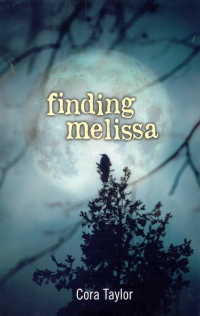| ________________
CM . . .
. Volume XX Number 24. . . .February 21, 2014
excerpt:
Clarice Warren is a senior in high school. To date, her life story has been coloured by the disappearance, and presumed death, of her two-year-old sister, Melissa. The search for Melissa, who was lost on a camping trip 12 years earlier, was called off when officials combed the area and determined it was likely that the toddler’s fate lay in the raging river or with a hungry bear suspected to have also mauled the family dog. Clarice’s mother cannot accept that Melissa is dead. Over the next decade, she spends all her energy searching for her younger daughter, to the neglect of Clarice who spends her first 16 years fruitlessly trying to win some of her mother’s attention. This gripping page-turner details Clarice’s struggle, along with two other narratives: the story of 14-year-old Leesa; and the tragedy of Heck - Leesa’s absentee, career criminal father. Leesa is another teenage girl struggling with her childhood. She has been plagued by night terrors that can only be soothed by Aunt Rosie, the only parent she has ever known. Set in Alberta and British Columbia, this novel highlights the ruggedness of the landscape and the influence of the natural surroundings on its residents and visitors. Vistas from alpine meadows to raging rivers feature prominently. The hamlet of Tomahawk is home to Leesa and Aunt Rosie, and the natural limestone Cadomin Cave is integral to the climax of the novel. The characters interact with these surroundings in authentic and realistic ways – camping, farming, exploring, and in a daring and heart-pounding escape. The realistic nature of the setting aligns with Taylor’s mastery of authentic character development. Readers, especially those who have lived in or experienced these parts of Canada, will appreciate the credibility of the characters in actions and voice as they interact with their environment. Finding Melissa unfolds through a variety of perspectives – Clarice’s personal journal, Leesa’s first-person narrative, and the third-person context and viewpoint of Heck, pedophile and prison inmate. This shift from one perspective to another requires the reader to pay close attention to the chapter headings. The publisher has assisted readers with these transitions by providing a different font for Heck’s chapters. However, this reader found the most confusion between Leesa’s and Clarice’s first-person narrative chapters in the early sections of the novel. If the font differentiation had extended to include a third typeface for the perspectives of one of the two young women throughout the novel, it would have eased my confusion. Undoubtedly, the three perspectives heighten the suspense and add to the novel’s tension and apprehensiveness as the rising action builds, but the character confusion does impede the development of some of the suspenseful elements. Several very mature themes are presented in this novel, and difficult topics such as pedophilia, prostitution, and drug abuse are explored in the third-person narrative. The unsentimental approach may cause anxiety for some sensitive, younger teens. However, the exposition of these realities for contemporary Canadians provides several excellent opportunities for critical thinking and reflection. Teachers and parents who promote the examination of tough issues for their students and children will appreciate the novel’s directness. Taylor’s economical use of language and the novel’s rapid pace provide the reader with a compelling plot. Minimal description and action-oriented character accounts keep the tension appropriately high throughout the evolution of the plot. Fans of the suspenseful writings of Caroline B. Clooney and Margaret Peterson Haddix will welcome this engaging Canadian alternative. Highly Recommended. Beth Maddigan is Memorial University of Newfoundland’s Education Librarian.
To comment
on this title or this review, send mail to cm@umanitoba.ca.
Copyright © the Manitoba Library Association. Reproduction for personal
use is permitted only if this copyright notice is maintained. Any
other reproduction is prohibited without permission.
NEXT REVIEW |
TABLE OF CONTENTS FOR THIS ISSUE
- February 21, 2014.
AUTHORS |
TITLES |
MEDIA REVIEWS |
PROFILES |
BACK ISSUES |
SEARCH |
CMARCHIVE |
HOME |
